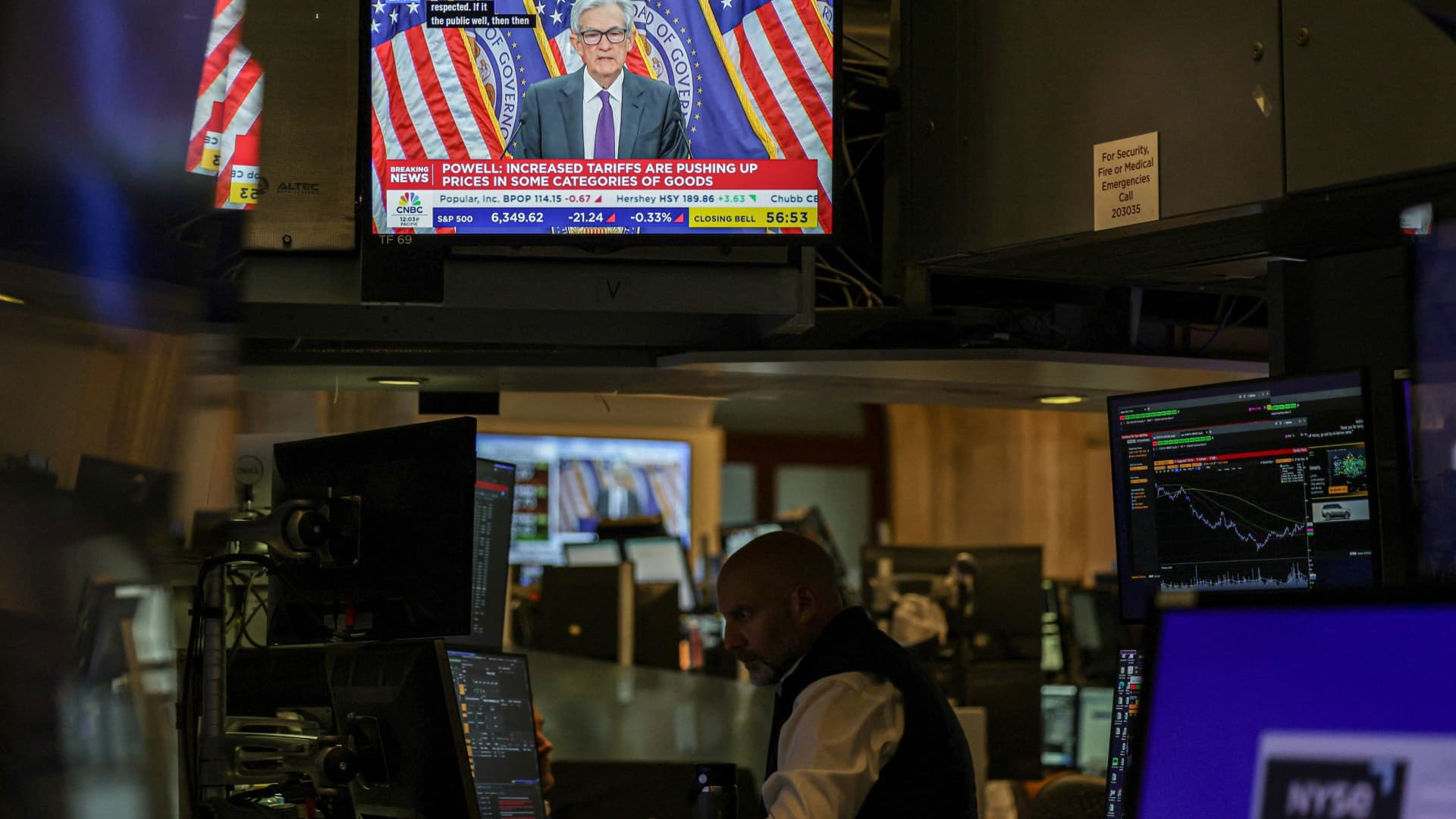A trader works, as a screen broadcasts a press conference by U.S. Federal Reserve Chair Jerome Powell following the Fed rate announcement, on the floor of the New York Stock Exchange in New York, U.S., July 30, 2025.
Jeenah Moon | Reuters
The S&P 500 gave up earlier gains and closed lower on Wednesday after Federal Reserve Chair Jerome Powell signaled the central bank isn’t ready to cut rates, as it assesses the impact of President Donald Trump’s higher tariffs on the inflation picture.
The broad market index slipped 0.12% and closed at 6,362.90. The Dow Jones Industrial Average fell 171.71 points, or 0.38%, closing at 44,461.28. The Nasdaq Composite gained 0.15% and ended at 21,129.67. At their session highs, the S&P 500 was up by as much as 0.4%, while the Dow was up 0.2%.
Investors parsed Powell’s comments at a press conference for insights into the Fed’s next move — after it didn’t budge on rates following its July meeting. Powell said that the central bank has “made no decisions” about a potential policy change in September.
“Our obligation is to keep longer-term inflation expectations well anchored and to prevent a one-time increase in the price level from becoming an ongoing inflation problem,” Powell said. “Higher tariffs have begun to show through more clearly to prices of some goods, but their overall effects on economic activity and inflation remain to be seen.”
S&P 500 intraday
The comments poured cold water on traders hoping for a rate cut in September and at least another decrease before the year is out. Treasury yields jumped as Powell signaled it may take a bit to assess the effect of tariffs on consumer prices.
The central bank’s decision to keep rates the same was not unanimous, however, with Fed governors Michelle Bowman and Christopher Waller dissenting. Both were in favor of a quarter-point cut at the current policy meeting.
“Powell isn’t buckling under the political pressure to cut rates, so markets needed to reprice the overall level of the Fed Funds rate going out a few months,” said Jamie Cox, managing partner at Harris Financial Group. “The reaction function wasn’t that bad, largely because it’s clear where rates are headed, despite Powell’s current ability to enforce the wait and see.”
It was the second day of losses for Wall Street following a streak of six record closes for the S&P 500. Major averages started the day mostly in the green, encouraged by a better-than-expected GDP report that signaled to some that the economy was weathering higher tariff rates.
The post-Fed losses were led by consumer-focused stocks like Home Depot, which could benefit from lower rates.
Correction: An earlier version misstated the number of consecutive records the S&P 500 has had in recent days.
